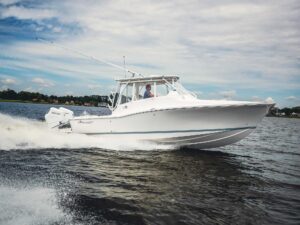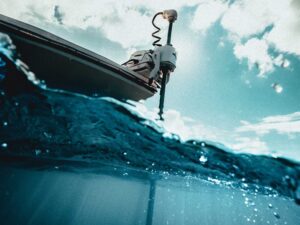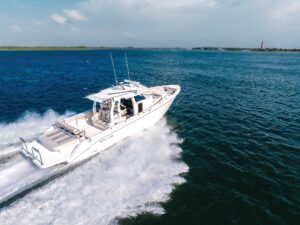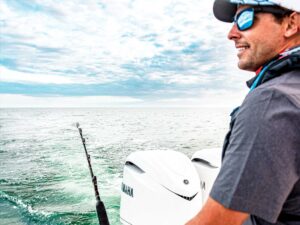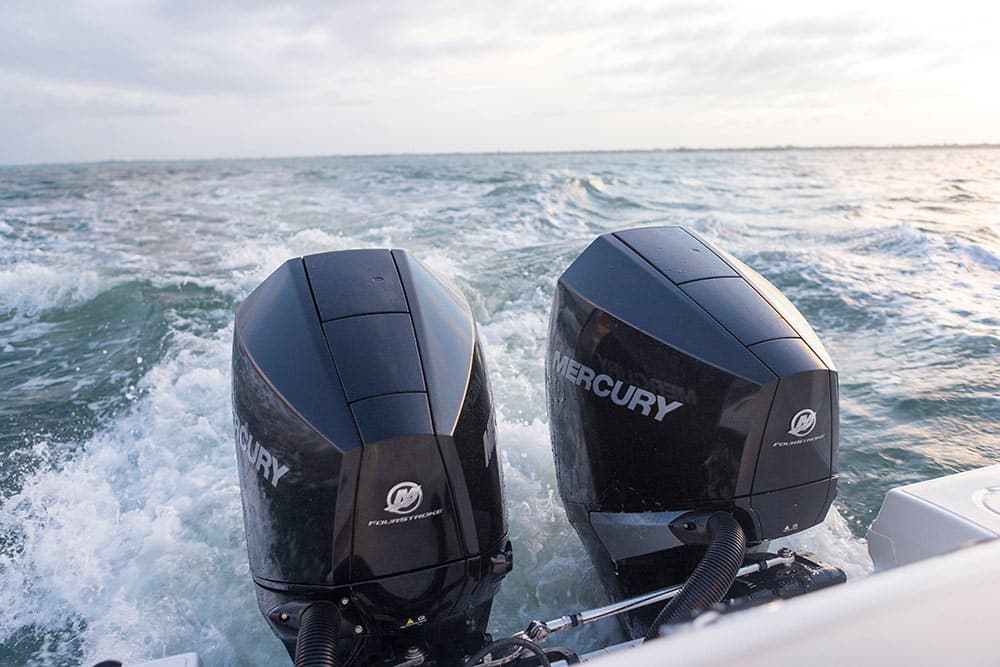
Mercury’s new naturally aspirated V-6 FourStrokes include 175, 200 and 225 horsepower models that are all game changers, offering not just superb power — in this popular mid-range category — but many new convenience features for easy handling and care. Fittingly, they were revealed to boating media earlier this month at Mercury’s historic Lake X research and development facility in central Florida.
Lake X was established in 1957 by Karl Kiekhaefer, founder of Mercury Marine, as a private testing center. However, Mercury sold the property in 2004. The company now leases Lake X for pre-boat-show staging and for introducing hush-hush new products.
So, when Mercury invited the press to Lake X, the company wouldn’t tell us what we’d see, but gave us a compelling hint that we’d be impressed. They were right.
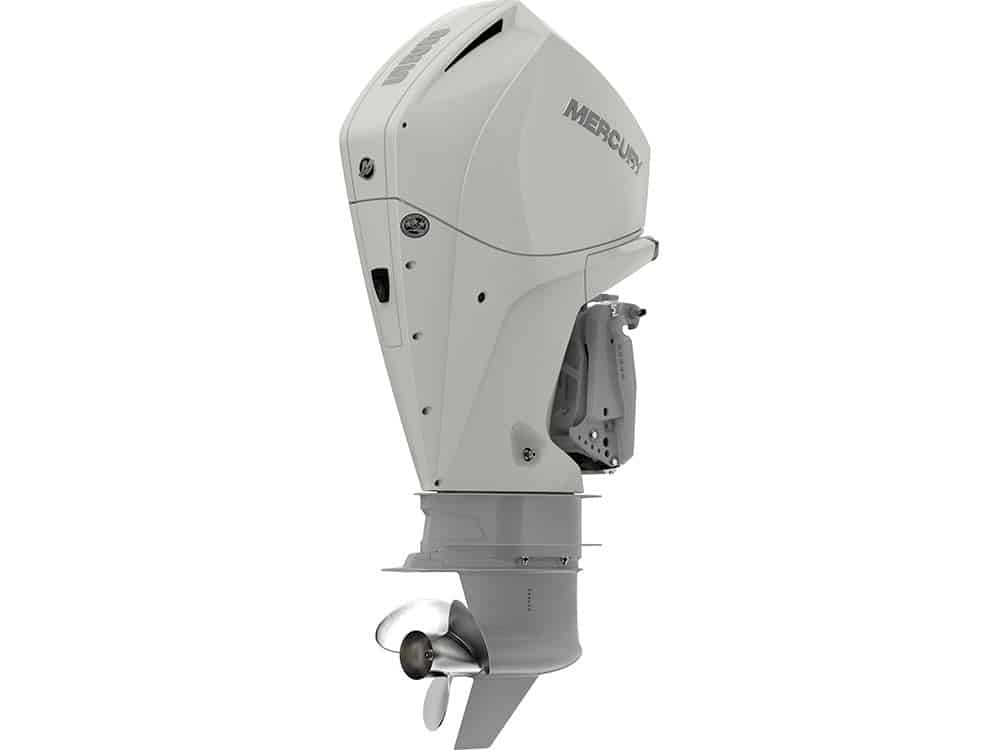
The three new V-6, 3.4L outboards Mercury revealed extend the company’s popular FourStroke lineup of 75- to 150-hp engines (and will replace 4-cylinder Verados and the 225 hp 6-cylinder Verado). The 3.4L V-6s are not only the lightest in their horsepower class — and that includes modern two-strokes — they are fast, torquey, quiet, fuel-sipping pleasures to drive.
They are compact, thanks to refinements such as nesting the alternator in the notch of the V-shaped cylinder banks. They are light, thanks to special design features that Mercury can foster in its own engine foundries. At 475 pounds for each of the 20-inch versions, these new V-6 FourStrokes weigh 35 pounds less than four-cylinder 175/200 Verados and 160 pounds less than the six-cylinder 225 Verado.
For ease of ownership, Mercury designed a small hatch in the top of the cowling that pops open like a gas fill cover to reveal an engine-oil dip stick, fill port and a newly designed cowling release latch. Press the red button on the handle, pull it up and lift off the cowling. That one tug releases multiple latches around the cowl, all designed to keep housing seals engaged and prevent entry of water from spray and following wakes.
Mercury also shaped the cowling design internally for sound control with multiple seals to prevent ambient noise from escaping. Intakes were tuned to reduce that noise and increase horsepower with improved aspiration. Special valve covers dampen the high-pitched sound from the 24-overhead valve train.
In addition to the new motors’ crisp trim shape, for the first time Mercury has increased the cowling color selection from three whites — cold, warm and pearl fusion — plus black, and offered four custom-colored trim plates (silver, graphite, red and blue) to achieve a look to go with any boat. For unlimited options, the company provides a primed panel ready for painting to match your boat.
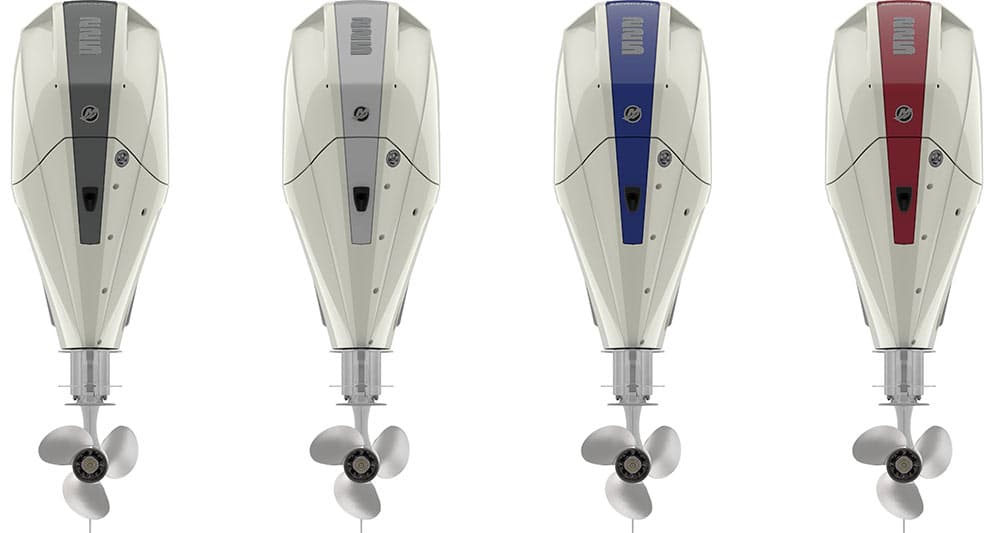
The motors look and sound sweet, but they run like a cheetah chasing a gazelle. Acceleration was quick: just over 3 seconds to 20 MPH on both single models powering boats in the 21- to 24-foot range. They were just as fast on heavier dual-engine boats. Top speeds ranged from 48 to 52 in both single and double configurations.
But the speed wasn’t what most awed the me on test day. Advanced Throttle Management is a system mapped into the electronic control module to sense load and advance the throttle automatically to maintain RPM. What that means is that the speed at which you enter a turn is the exact speed you come out of the turn. Or, when pushing through seas, the motor will recognize the load of pushing or being pushed by a wave and automatically advance throttle to maintain speed. The system is smoother than the most experienced captains — I kid you not.
Mercury added a new tweak to its Active Trim Module, too. With it, the automatically achieved trim setting can be overridden by the captain as has been normal for the product, but now, when trim input ceases, Active Trim reactivates and continues to maintain ideal trim settings for each speed.
Because fishermen are notoriously hard on battery systems by running radar, multiple sonar systems, chart plotters and a stereo amplifier, these new Mercurys automatically boost idle-speed setting to raise amp output from the alternator.
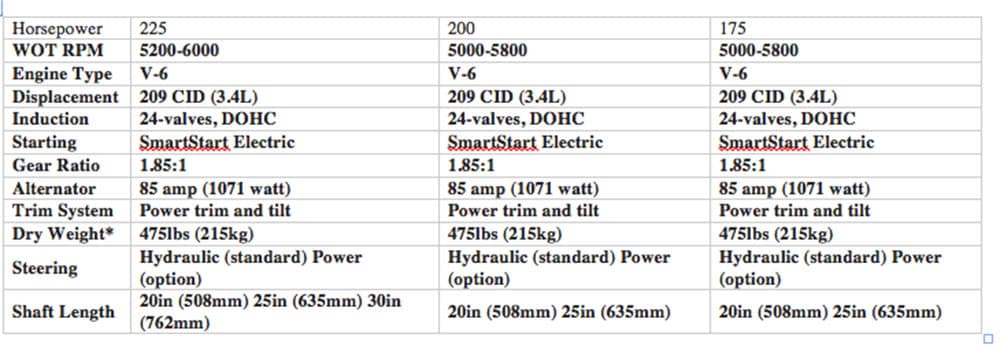
Mercury also designed these motors to run on either old-school cable controls or digital throttle-and-shift controls. Engine data can be output to VesselView screens or chart plotters or displayed on analog gauges. The real engine controls are still digital under the cowling, but how you get the skipper’s input to them is your choice, digital or cable.
My tests on Mercury’s media day verified top speed, acceleration and fuel burn reported by Mercury, but it will be some time before I can compare head-to-head performance tests against the competition. In the meantime, I saw no reason to doubt Mercury’s claims of fastest, smoothest, quietest and most economical. I look forward to more experiences with these new motors.
Editor’s note: The new outboards are in production now, and the company will start taking orders today, February 15, with ship dates to come. Pricing depends on the chosen configuration. Talk to a Mercury dealer for more information.

